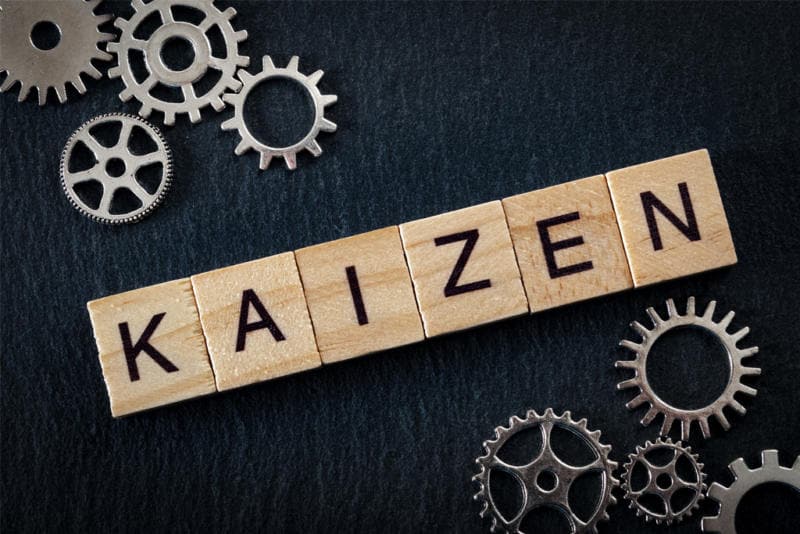The Power of Kaizen: How Small Steps Can Lead to Big Improvements:
Written By: Er. PARAMESWAR MURMU
In today’s fast-paced world, businesses are constantly looking for ways to improve efficiency and reduce costs. One approach that has gained popularity in recent years is Kaizen. Kaizen is a Japanese term that means “continuous improvement”. It is a philosophy that emphasizes making small, incremental changes to processes and systems to achieve big results over time. In this article, we will explore the concept of Kaizen, its benefits, and how businesses can implement it to drive success.
Table of Contents
- Introduction of KAIZEN:
- What is Kaizen?
- Historical Background:
- Principles of Kaizen:
- Continuous Improvement
- Standardization
- Employee Involvement
- Kaizen in Practice:
- Kaizen Events
- Gemba Walks
- 5S Methodology
- Benefits of Kaizen:
- Increased Productivity
- Cost Reduction
- Quality Improvement
- Challenges of Implementing Kaizen:
- Success Stories:
- Kaizen in Different Industries:
- Kaizen and Lean Manufacturing:
- Kaizen Tools:
- PDCA Cycle
- Fishbone Diagram
- 5 Whys
- Kaizen Leadership:
- Kaizen Culture:
- Future Trends in Kaizen:
- Conclusion:
- FAQs:
Introduction of KAIZEN:
Welcome to the world of Kaizen – a philosophy that has revolutionized the way organizations approach continuous improvement. In this article, we’ll delve into the intricacies of Kaizen, exploring its roots, principles, practical applications, and the transformative impact it has on various industries.
What is Kaizen?
Kaizen, a Japanese term meaning “change for better,” is a systematic approach to continuous improvement. It originated in post-WWII Japan and has since become a cornerstone of many successful business strategies worldwide.
Historical Background:
To understand Kaizen fully, let’s take a brief look back in time. Developed by Toyota in the 1950s, Kaizen emerged as a response to the need for efficient, quality-driven production processes. The methodology gained prominence as it contributed significantly to Japan’s economic resurgence.
Principles of Kaizen:
I: Continuous Improvement:
At the heart of Kaizen is the commitment to continuous improvement. This principle emphasizes the incremental, day-to-day advancements that collectively lead to significant positive changes.
II: Standardization:
Standardizing processes ensures consistency and allows for easier identification of areas that need improvement. Kaizen encourages organizations to establish and adhere to standardized practices.
III: Employee Involvement:
Kaizen recognizes that employees, being closest to the processes, have invaluable insights. Involving them in decision-making fosters a culture of ownership and accountability.
Kaizen in Practice:
I: Kaizen Events:
Organizations often conduct Kaizen events, focused, time-bound activities aimed at solving specific problems. These events bring together cross-functional teams to brainstorm and implement improvements swiftly.
II: Gemba Walks:
Gemba, the place where value is created, is a crucial concept in Kaizen. Leaders regularly engage in Gemba walks, directly observing processes and engaging with employees to identify improvement opportunities.
III: 5S Methodology:
The 5S methodology (Sort, Set in order, Shine, Standardize, Sustain) is a practical approach within Kaizen, promoting workplace organization and efficiency.
Benefits of Kaizen:
I: Increased Productivity:
By constantly refining processes, Kaizen leads to increased productivity as inefficiencies are identified and eliminated.
II: Cost Reduction:
Continuous improvement often results in cost reduction through streamlined processes, resource optimization, and waste elimination.
III: Quality Improvement:
Kaizen’s focus on standardization and employee involvement contributes to enhanced product and service quality.
Challenges of Implementing Kaizen:
While the benefits are substantial, implementing Kaizen isn’t without challenges. Resistance to change, lack of commitment, and the need for a cultural shift are common hurdles organizations may face.
Success Stories:
Several organizations have embraced Kaizen successfully, with notable improvements in efficiency, quality, and employee satisfaction. Toyota, General Electric, and Amazon are prime examples.
Kaizen in Different Industries:
Kaizen’s versatility allows its application in various industries, including manufacturing, healthcare, and software development, showcasing its universal effectiveness.
Kaizen and Lean Manufacturing:
Kaizen is closely linked to Lean Manufacturing, sharing a common goal of minimizing waste and maximizing value. The synergy between the two approaches often leads to profound operational improvements.
Kaizen Tools:
I: PDCA Cycle
The Plan-Do-Check-Act (PDCA) cycle is a problem-solving approach integral to Kaizen, providing a systematic framework for continuous improvement.
II: Fishbone Diagram
The Fishbone Diagram, or Ishikawa Diagram, is a visual tool used in Kaizen to identify the root causes of problems, facilitating targeted solutions.
III: 5 Whys
Asking “Why” five times helps to identify the underlying causes of an issue, promoting a deeper understanding and more effective problem-solving.
Kaizen Leadership:
Successful Kaizen implementation requires strong leadership. Leaders must inspire and guide teams, fostering a culture of continuous improvement.
Kaizen Culture:
Beyond methodologies, Kaizen emphasizes the importance of cultivating a culture where improvement is everyone’s responsibility. This cultural shift is fundamental to long-term success.
Future Trends in Kaizen:
The landscape of continuous improvement is evolving. Future trends in Kaizen may involve increased integration with technology, data-driven decision-making, and a stronger emphasis on sustainability.
Conclusion:
In conclusion, Kaizen isn’t just a methodology; it’s a mindset that propels organizations toward excellence. By embracing continuous improvement, standardization, and employee involvement, businesses can navigate the ever-changing landscape and achieve sustainable success.
FAQs:
Q: Is Kaizen only suitable for manufacturing industries?
A: Kaizen’s principles are adaptable and applicable across various industries, including service, healthcare, and software development.
Q: How long does it take to see results from implementing Kaizen?
A: The timeline for seeing results varies, but organizations often experience positive changes within a few weeks to months.
Q: Can small businesses benefit from Kaizen?
A: Absolutely. Kaizen’s principles are scalable, making it beneficial for businesses of all sizes.
Q: What role does leadership play in Kaizen implementation?
A: Leadership is crucial for successful Kaizen implementation, as leaders guide and inspire teams toward continuous improvement.
Q: Is Kaizen a one-time initiative, or is it ongoing?
A: Kaizen is an ongoing, continuous improvement process. It’s not a one-time initiative but a long-term commitment to excellence.

